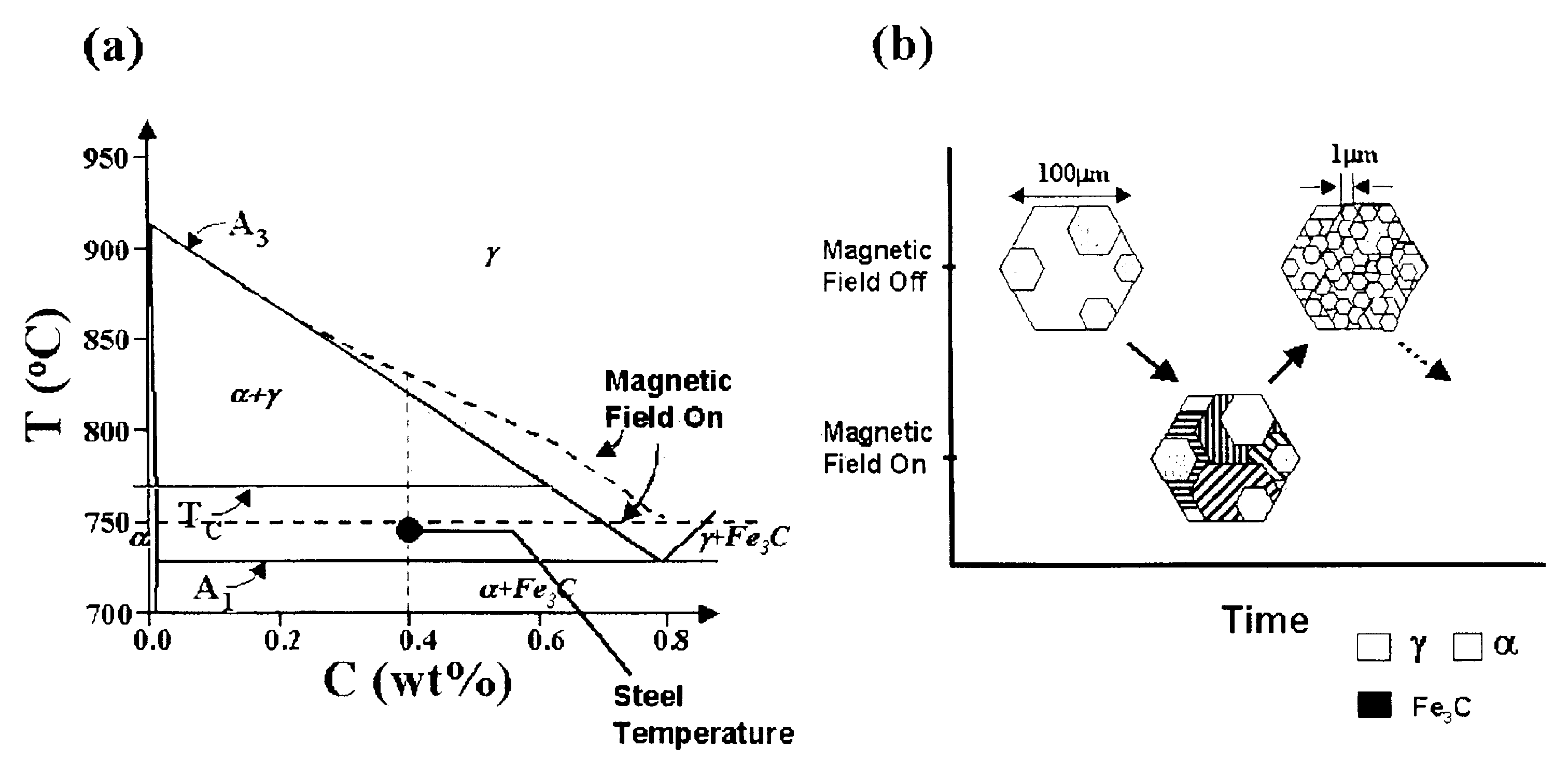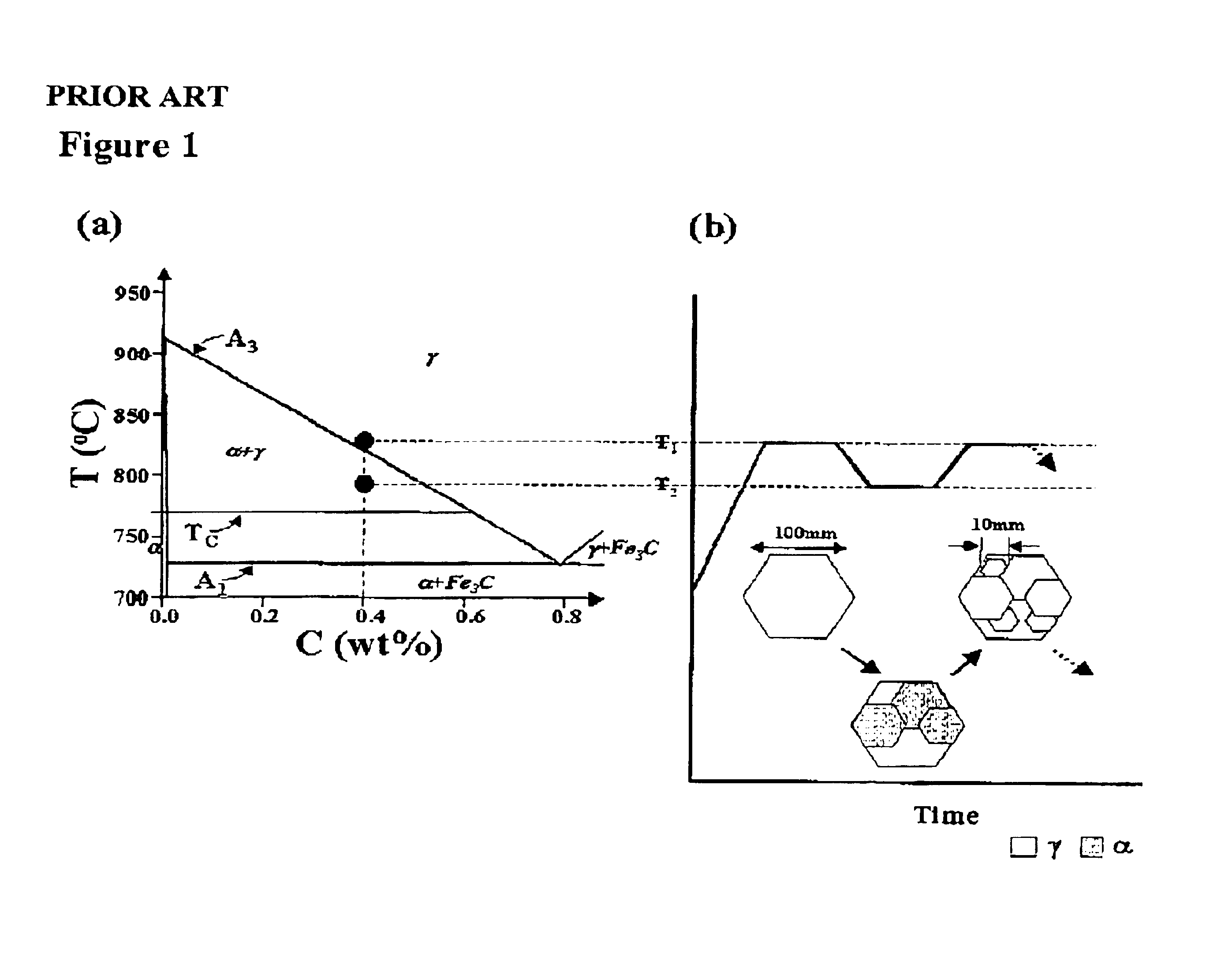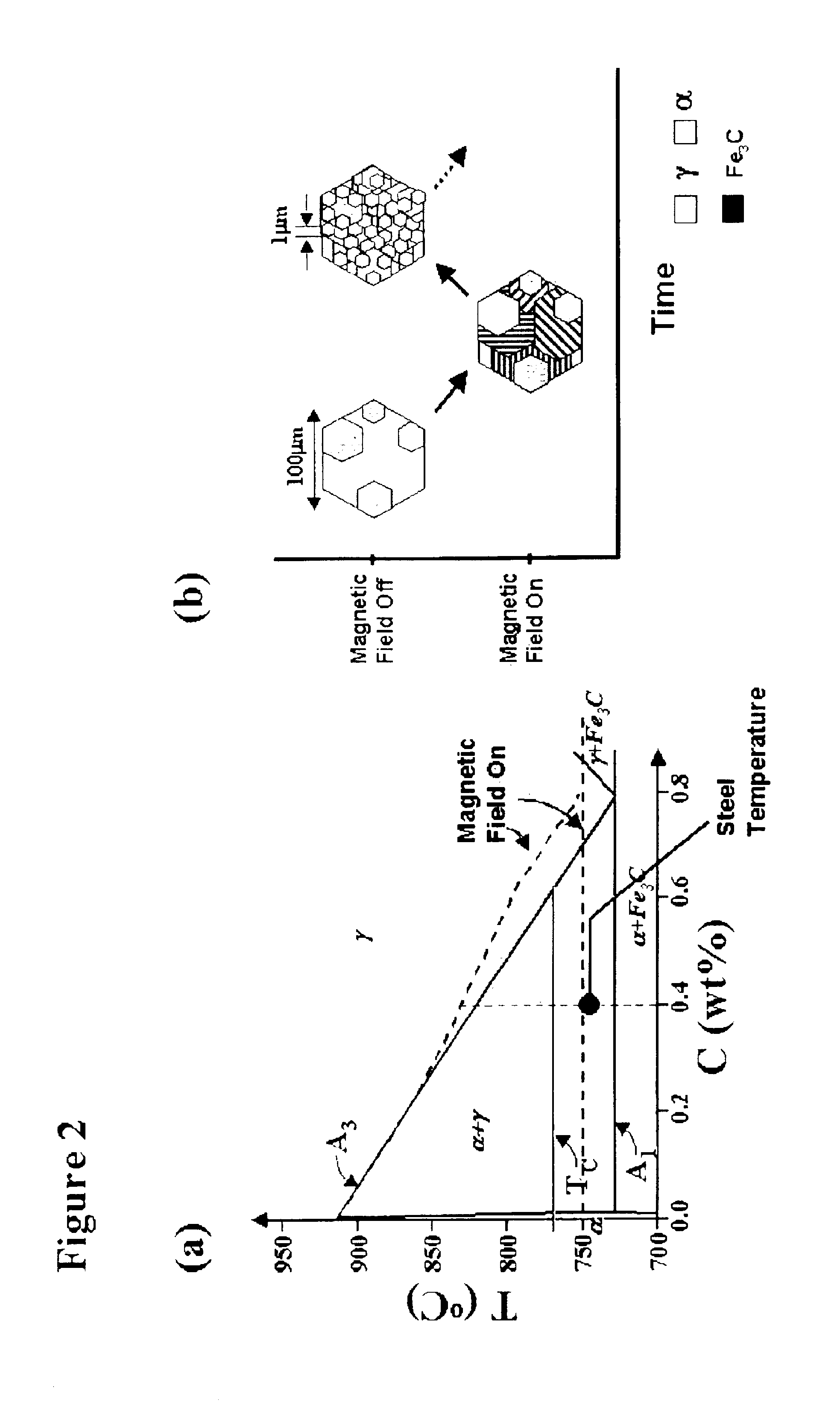Grain refinement of alloys using magnetic field processing
a magnetic field and alloy technology, applied in the direction of magnetic materials, basic electric elements, magnetic bodies, etc., can solve the problems of limited smallest grain size achievable by state-of-the-art techniques, inability to achieve superplasticity in the practice of large components typifying commercial applications, and limited free energy. , to achieve the effect of enhancing the thermodynamic stability of the ferromagnetic phase(s), reducing free energy, and reducing the free energy
- Summary
- Abstract
- Description
- Claims
- Application Information
AI Technical Summary
Benefits of technology
Problems solved by technology
Method used
Image
Examples
Embodiment Construction
[0023]Although the embodiments of the present invention are described in the following using its application to carbon and low alloy steels, it would be obvious to those skilled in the art that the invention has broad applicability to any alloy which displays magnetic phase transitions, preferably ferromagnetic ⇄ paramagnetic phase transitions. The alloys of the invention with refined equiaxed grain size which are produced by the invention described herein may be used to fabricate structural components and processing equipment such as pressure vessels. These structures and equipment have applications such as in oil and gas exploration, oil and gas production, refining processing, and chemical processing. The refined grain alloys produced herein provide stronger and tougher materials out of which structural components can be fabricated. Beneficially, alloys with equiaxed grain size of less than 10 micrometers at high temperature can be produced. Said alloys can be further processed b...
PUM
| Property | Measurement | Unit |
|---|---|---|
| grain size | aaaaa | aaaaa |
| magnetic field | aaaaa | aaaaa |
| temperature | aaaaa | aaaaa |
Abstract
Description
Claims
Application Information
 Login to View More
Login to View More - R&D
- Intellectual Property
- Life Sciences
- Materials
- Tech Scout
- Unparalleled Data Quality
- Higher Quality Content
- 60% Fewer Hallucinations
Browse by: Latest US Patents, China's latest patents, Technical Efficacy Thesaurus, Application Domain, Technology Topic, Popular Technical Reports.
© 2025 PatSnap. All rights reserved.Legal|Privacy policy|Modern Slavery Act Transparency Statement|Sitemap|About US| Contact US: help@patsnap.com



